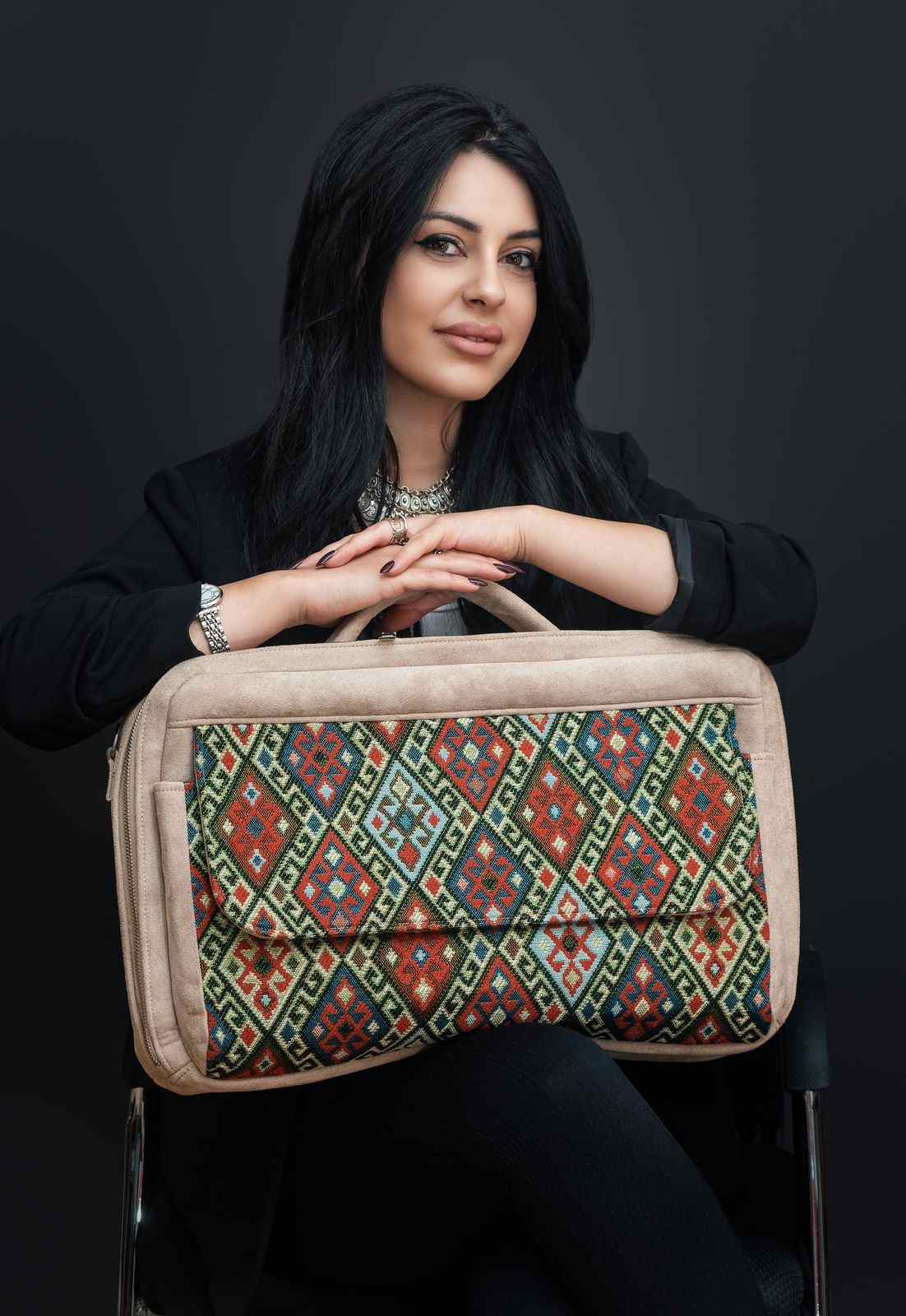Sewing Hope for Armenia to revive the Armenian textile Industry
17 April, 2023

Following the launch of its fashion and home accessories line, Sewing Hope for Armenia works to revive the artisanship of the Armenian traditional weave.
Close to Sewing Hope for Armenia’s heart, is the fate of the Armenian traditional woven textile industry. During the Soviet years, Leninakan (now Gyumri), was known as the “city of masters” and was the center of Armenia’s textile industry. Set up in 1939, on the base of the existing Orphan City Textile Mill, the Textile May Uprising Kombinat (named after a coup attempt by Armenian Bolsheviks that started in Gyumri on May 10, 1920) united a large spinning mill and a textile factory. There were 76,000 spindles in the spinning mill alone and 2,264 weaving machines in the textile factory. Workers managed several machines at the same time. Specialists from other parts of the USSR—mainly female spinners and weavers—also worked there.
As the Armenian Soviet Socialist Republic collapsed and the 2nd Republic of Armenia was born, the factories of this Soviet-era juggernaut were privatized. From 1991-1994,
Read More : Pakistan eyes higher textile exports to China
the kombinat’s chintz and textile workshops were still in operation but by the late 1990s, only a small spinning workshop survived. The textile kombinat was officially declared bankrupt in 2007 and while its assets were being auctioned off, former textile workers, some of whom were single elderly people, were still living in the kombinat’s dormitory. Two female pensioners actually lived in the dilapidated dormitory until 2020. The kombinat had “adopted” them after World War II. The last “orphans” of the kombinat received social housing last year.Since, the traditional colorful Armenian weave, which made Armenia’s textile industry famous across not only the Soviet space but equally internationally, has been imported, largely made in what was Western Armenia, now occupied by Turkey since the Treaty of Brest-Litovsk on March 3rd, 1918. Traditional Armenian patterns are adapted, modified to culturally suit the new occupier of the land, thus, subliminally deforming what was once a pride of Armenian culture. Despite this, and in the absence of locally produced materials, these patterns dominate the Armenian markets, from the tourist popular sites such as Yerevan’s Vernissage, Khor Virap or Garni Temples. Popular restaurants set their tables using these patterns – a version of Armenia “Made in Turkey”.
Sewing Hope for Armenia, a social enterprise built up at the end of 2020, 44-day war to support Artsakh refugees and Widows of War by creating Fashion and Home Accessories, has made it its mission to revive this industry and restore, to its rightful place, the Armenian Textile Industry. Working together with historical experts to certify the colors and patterns authentic to the greater Armenian culture (both Western and Eastern), ancient pieces have been digitalized and revived into production, available across Sewing Hope for Armenia’s product range or as rolls of cloth per the meter. Working with partners in both the private and public sectors, in Armenia and Internationally, Sewing Hope for Armenia is working to revive the Armenian textile industry on a large scale, and creating a lifestyle destination around the Armenian textile industry for visitors to discover and enjoy.
